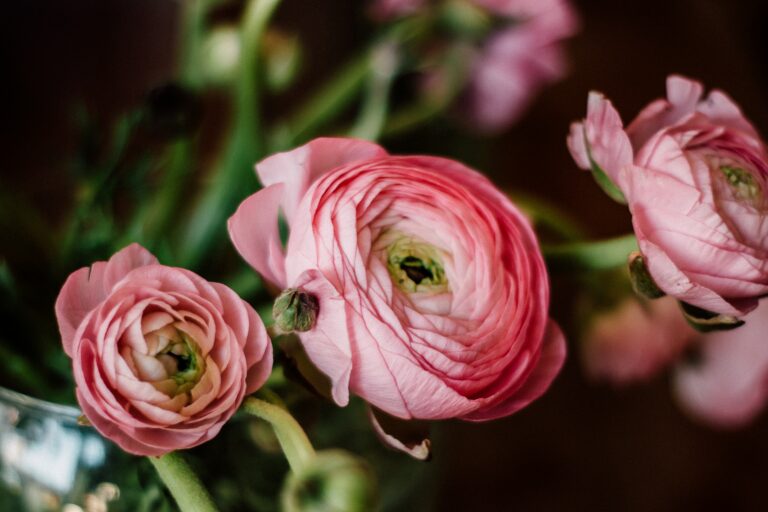Welcome to the enchanting world of Ranunculus flowers! With their delicate petals and vibrant colors, these blooms are sure to captivate any flower enthusiast. Ranunculus, (Ranunculus asiaticus) is a stunning flowering plant native to the Mediterranean region. Its name originates from the Latin word “rana,” meaning frog, possibly due to its affinity for moist environments. These charming flowers come in a kaleidoscope of hues, ranging from soft pastels to bold and fiery shades.
Though they may appear delicate, Ranunculus flowers are surprisingly hardy and relatively easy to care for, making them an ideal choice for both seasoned gardeners and beginners alike.
Common Ranunculus varieties:
- Persian buttercup
- Bulbous buttercup
- Meadow buttercup,Creeping buttercup
- Tall buttercup
Care
Ranunculus are easy to grow by planting the corms correctly, either in the fall for mild winters or in early spring after the last frost for colder zones. As mentioned before, they are not very hard to care for, just by paying attention to these requirements:
- Soil: they thrive in well-draining, rich, loamy soil, while certain native varieties, like Ranunculus repens, can tolerate wetter, heavier soils near water sources, reflecting their Latin name’s connection to damp environments.
- Light: To achieve abundant blooms and strong stems, it is crucial to plant ranunculus in a location that enjoys full sun or receives at least 6 to 8 hours of sunlight each day.
- Temperature: they are most comfortable in temps between 1.5-10C (35-50F).
- Water: As the foliage and flowers emerge, regular watering is necessary. Watering every two weeks is preferable, however, once the flowers fade and the foliage turns yellow, you should dial it down, because that means they get too much of it.
Propagation
Just like one the case of Prayer Plants or ZZ plants, there are several ways to propagate ranunculus at home. The most common methods are planting corms, dividing established plants, and starting from seeds. Planting corms is probably the easiest and most popular way, where you simply place them in well-prepared soil. Dividing mature plants involves carefully separating the corms and replanting them. Starting from seeds requires a bit more patience, as you sow them in seed trays and provide proper care until they develop into young plants ready for transplanting.
Pruning
Some types, like meadow buttercups and creeping buttercups, require minimal care and make lovely low-maintenance additions. However, if you opt for other ranunculus varieties that demand a little more attention (like the Ranunculus asiaticus, the “Persian Buttercup” or “Garden Ranunculus,”), you might as well get ready to do some deadheading.
Deadheading spent blooms can extend the flowering period and promote more blossoms rather than seed production. Pruning is generally unnecessary except for removing faded flowers, and it’s important to allow the foliage to collect energy for healthy growth.
Once the foliage dies back naturally, you can trim it, or you may choose to lift and store the tubers during winter.
Common Pests
These flowers are usually not plagued by many pests, but Aphids really like them. Avoiding overwatering is a good way to prevent them.
Frequently Asked Questions
Ranunculus thrives in regions with mild winters and extended, cool springs, making fall the optimal planting time. While Ranunculus can flourish in zones 3 to 10, lifting the plants is necessary in zones 3 to 7.
Can ranunculus be an indoor plant?
Yes, you can keep your ranunculus plant inside too. Just give them a lot of bright, indirect sunlight.
How long will ranunculus last?
If you put it in a vase and change the water daily, it can last for over 10 days.
Do ranunculus need sun?
Ranunculus flowers love full sun, but only in mild or cooler climates.
Do ranunculus bulbs multiply?
Yes, if you plant one ranunculus bulb, it can multiply into 8 tubers.


